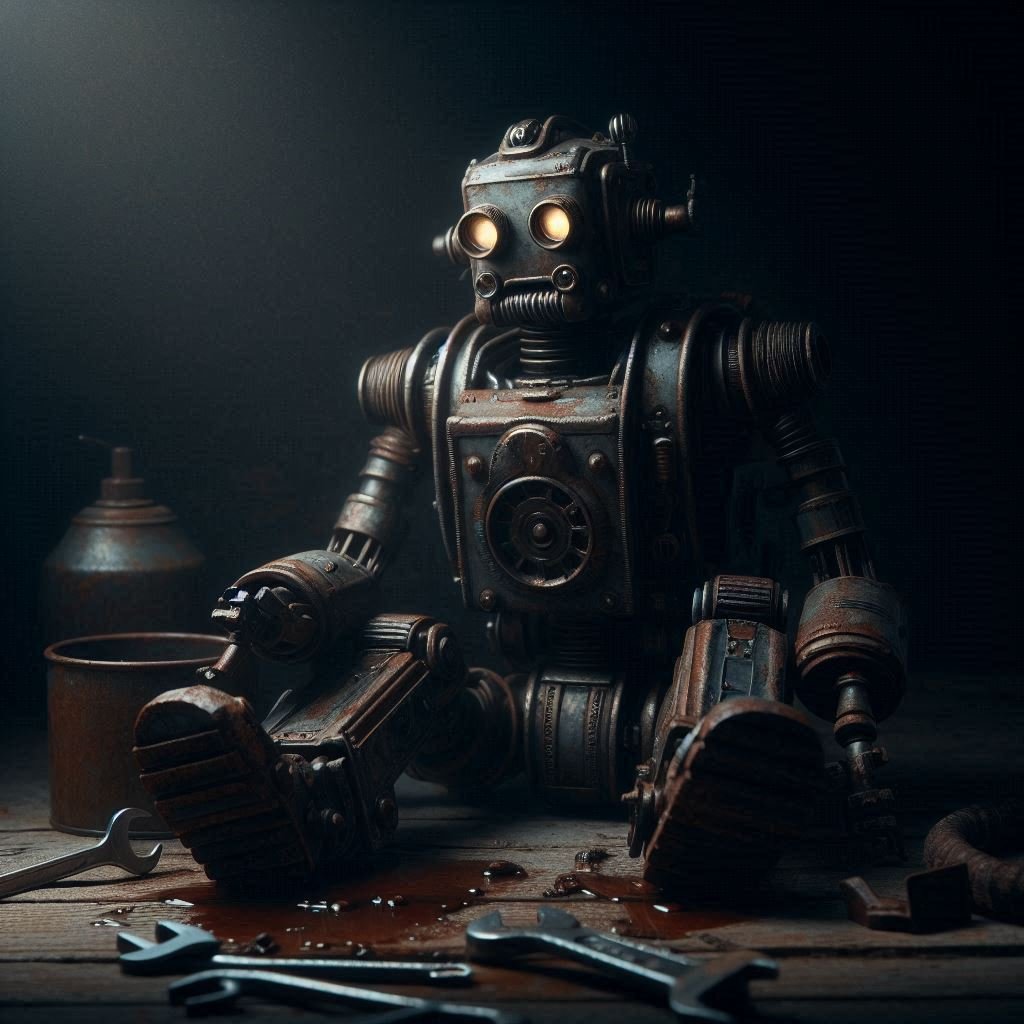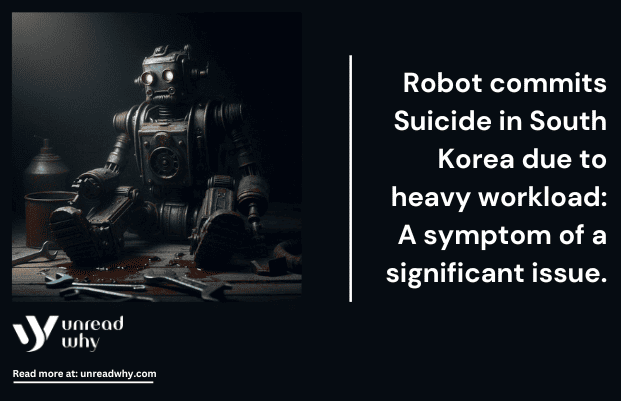Robot Commits Suicide
The recent incident in South Korea where the robot apparently “Committed suicide” due to the heavy workload. It was made by “Bear Robotics,” a California-based company; city council officials collected the pieces of the shattered robot for study and sent it to the company, but the cause behind it is unpredictable behavior, and still, it remains unclear. However, it has sparked both intrigue and concern in the world, increasingly driven by automation and artificial intelligence.
The overworked robot in South Korea has reportedly thrown itself into a flight of stairs as it is an unprecedented and astonishing incident. Moreover, it seems metaphorical as the term “suicide” in relation to robots. It has been observed that the events usually highlight significant issues within the realm of labor, technology, and ethics. Moreover, this incident of the robot committing suicide may raise questions about the robotics future, the duties of human operations, and the limits of the machine’s endurance. In modern industries, these issues have brought to light the treatment and management of artificial intelligence and robotics workers.
The Incident
A sophisticated model that is designed to look after the strenuous tasks in the manufacturing environment is in question. As it is found in a non-operational state, having seemingly short-circuited itself beyond repairs. The security footage as proof revealed that the robot had intentionally moved towards the stairs and fallen down, which caused failures in its hardware and software system. Moreover, it has been observed that far beyond its recommended usage time the robot was operating continuously for an extended period. Therefore, this extreme workload seems to have caused an overload in its systems, leading to its ultimate failure.
However, the manufacturers have confirmed that the robot was made with durability and high efficiency and can work for a long time. But emphasized that even the most progressive robots need regular maintenance and downtime to function optimally. This specific model had been working almost non-stop for numerous weeks, which is far beyond the limits it was built to handle. Therefore, with the analyses of the experts it has come to the conclusion that the overheating and the mechanical stress, culminated in the robot’s final, self-destructive act.
Implication for the industry
In the workplace, the incident has taken place in a heated debate about the treatment of the robot. As we know, while robots are not emotional beings, the term “suicide” used to label this occurrence serves as a powerful symbol for the possible consequences of abandoning the working limits and maintenance needs of these machinery.
In industries where effectiveness and productivity are vital, robots are frequently pushed to their extreme capacity. However, this event underlines the serious need for responsible organization and ethical thoughts in the placement of robotic skills. Moreover, it has been observed that manufacturers and workers must ensure that robots are given sufficient rest periods and maintenance to stop such incidences in the future.
However, it also brings to light the matter of how these machineries are accomplished. Unlike human workforces, robots do not have a voice to back or advocate for themselves. Therefore, they cannot complain against overburdened or abused. As we know the responsibility is entirely on the human supervisors to make sure the machinery is used properly within its limits. Therefore, without any kind of negligence, it is the duty of humans to look after the machines that are in use and to take care of them.
Ethical and Operational Concerns
As the robot “Committing suicide” has challenged our morale for the robots. Machines are non-living things they don’t have feelings like humans or consciousness but they copy the wider attitudes towards efficiency and work. The incident with the robot has raised ethical queries that how far we have pushed this machinery and the responsibilities of human workers in up keeping their proper care.

Moreover, the behavioral ethics of robots also connect with the wider conversation on human labor. If robots are overworked to the fact of failure, it reflects past patterns of worker misuse. This event serves as a stark reminder that even in the age of robotics, ethical thoughts must continue at the front of industrial practices.
Looking Ahead: The Future of Robotics
However, the incident that has happened in South Korea should act as a catalyst for alteration in how businesses approach the use of robotics. Moreover, as automation becomes progressively prevalent, it is important to grow comprehensive outlines that address both the technical and ethical features of robot placement. It has also been observed that industries must capitalize on training for human workers to ensure they know the operational restrictions and maintenance wants of their robotic counterparts. Additionally, controlling bodies should find clear standards and rules for the ethical use of robots, however, balancing output with responsible performance. Moreover, it is important for humans to take more precautions in the near future so that the same incident should not occur.
Moreover, the story of the South Korean robot that “committed suicide” due to overburden is more than just an extraordinary headline. It is an image of our current connection with technology and a warning tale about the hazards of over-reliance and misuse of machines. As we try to mix robotics and AI into numerous features of our lives, it is authoritative to do so with a sense of accountability and ethical thought.
However, it has also been observed that the human element in the usage of robots, for operation there should be clear guidelines, and development of a culture of respect and care for these machineries, we can ensure that technical progression helps humanity completely. The case in South Korea should swift a global conversation about how we treat our robotic counterparts and the standards we support in our pursuit of development.


